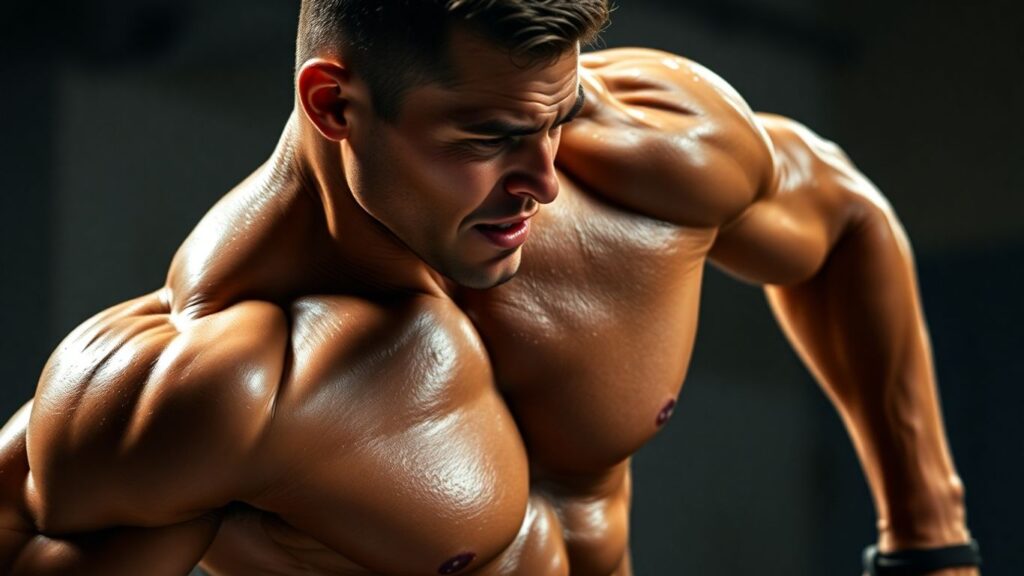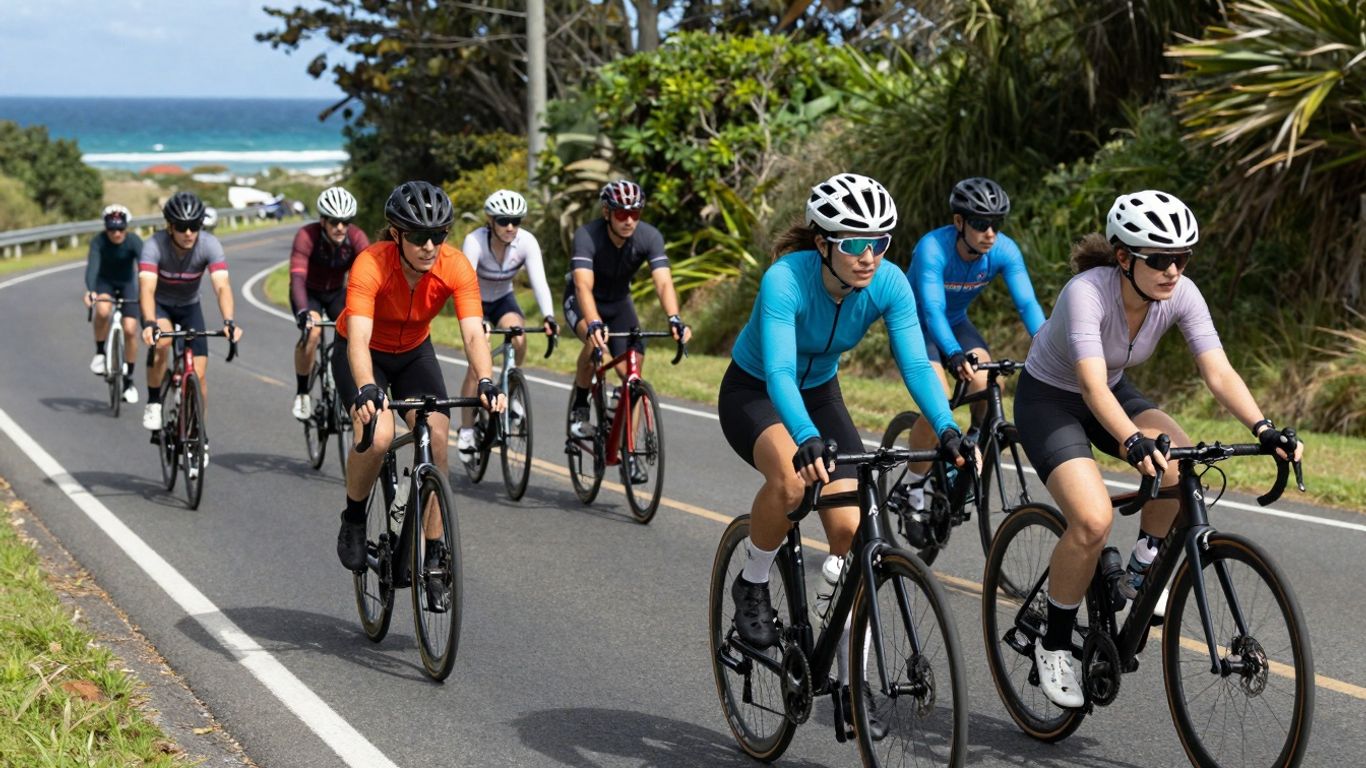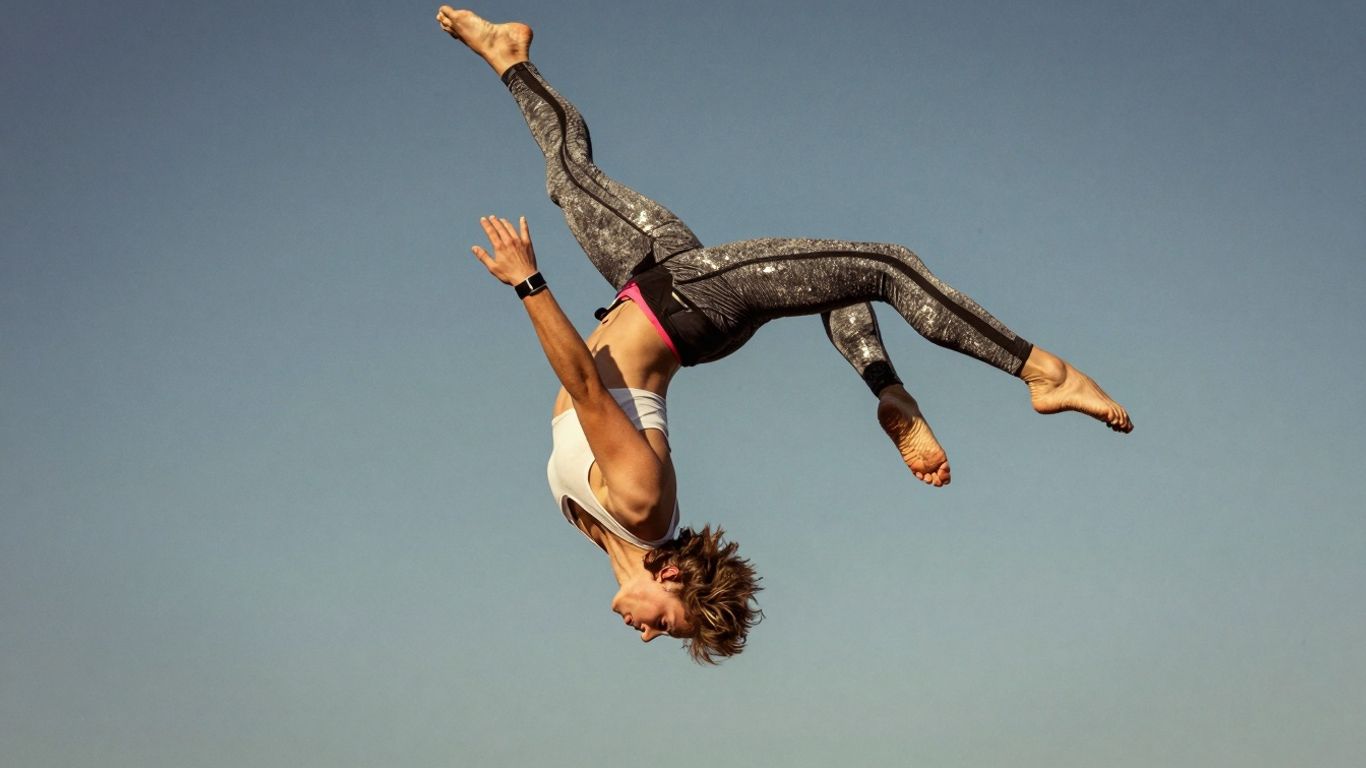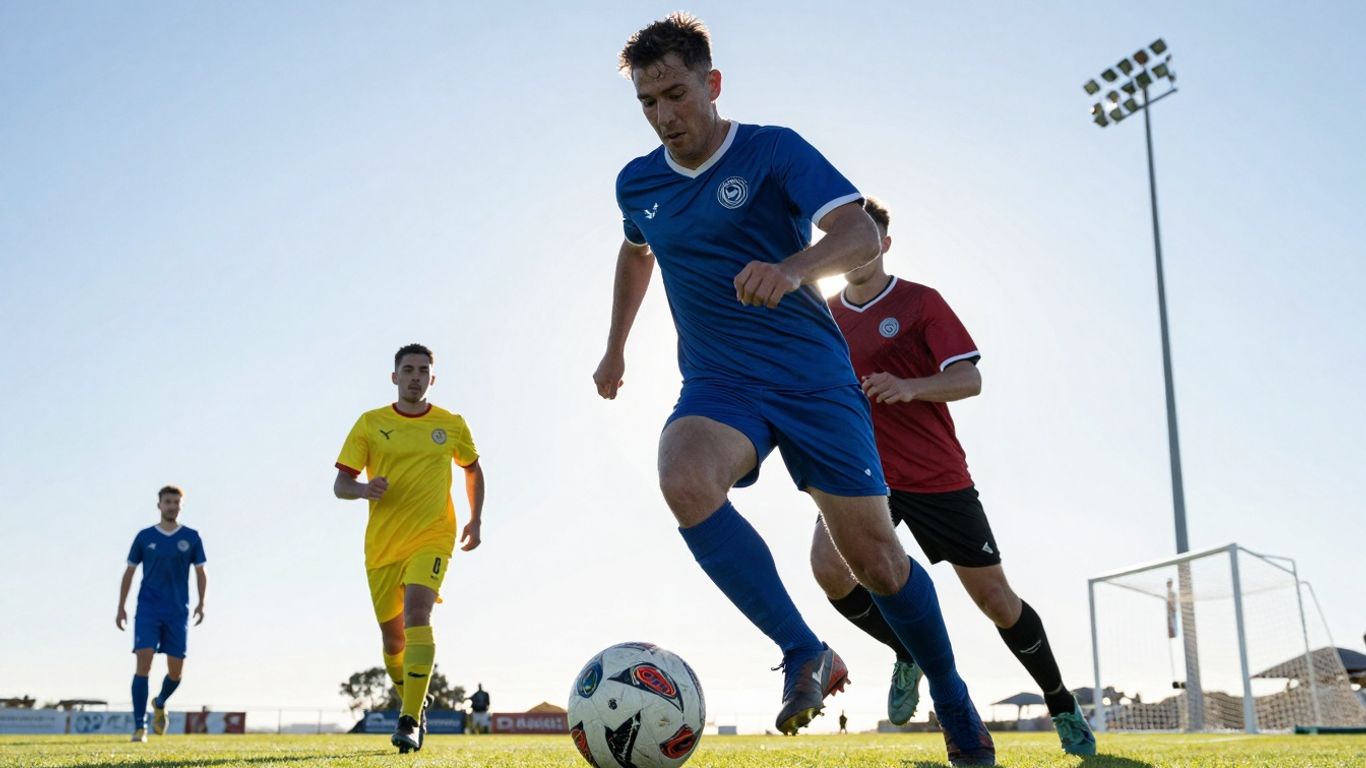Ever wondered how those fitness gurus get so ripped? For decades, Muscle & Fitness magazine has been the go-to source for all things iron-pumping and healthy eating. Whether you’re just starting out or you’re a seasoned gym rat, this publication has a long history of dishing out advice that’s helped people reach their physical goals. We’re going to take a look at what makes this magazine a classic and how you can use its insights to get yourself in top shape.
Key Takeaways
- Muscle & Fitness magazine has a long history, starting as ‘Your Physique’ in 1935 and evolving to cover a wide range of training and nutrition.
- The magazine was known for its mix of training programs, diet tips, supplement reviews, and profiles of top athletes, making it a comprehensive guide.
- Vintage issues are collected today because they showcase the evolution of bodybuilding and feature iconic figures and timeless advice.
- Be aware that fitness advice, including from magazines, can sometimes be influenced by trends or commercial interests, so critical thinking is important.
- The magazine provides practical advice for building strength and confidence, covering everything from beginner workouts to equipment guides and health benefits.
The Enduring Legacy Of Muscle & Fitness Magazine

A Brief History Of Strength Training’s Premier Publication
Muscle & Fitness magazine, it’s been around for ages, right? It actually started way back in 1935, but it wasn’t called Muscle & Fitness then. It was a smaller publication called Your Physique, started by Joe and Ben Weider. By 1954, it became Muscle Builder, and then in 1980, it got its current name, Muscle & Fitness. This change reflected a broader scope, covering not just bodybuilding but also general training, nutrition, and athletic performance. Joe Weider, often called the ‘Father of Bodybuilding’, really made the magazine the voice of a whole movement. It shaped how people trained, what they knew about nutrition, and the whole culture around physical fitness globally. It was more than just a magazine; it was a guide for generations.
What Set Muscle & Fitness Apart In Its Golden Era
What made Muscle & Fitness stand out back in the day? Well, it wasn’t just about showing off ripped bodies, though there was plenty of that. It was a complete package. You’d get training routines designed for serious gains, whether you were after strength, size, or endurance. Then there was the nutrition advice – solid plans and strategies to fuel your body properly. They also reviewed supplements, which was a big deal as the industry grew. Plus, you got interviews with the biggest names in the sport, like Arnold Schwarzenegger and Lou Ferrigno, and amazing photos of their physiques. It felt like having a training partner right there on your coffee table, pushing you to hit the gym and do that extra rep. It was the go-to source for anyone serious about building muscle.
Why Collectors Cherish Vintage Muscle & Fitness Issues
People love collecting old Muscle & Fitness magazines, and it’s easy to see why. These aren’t just old magazines; they’re like snapshots of fitness history. Each issue documents the rise of bodybuilding legends – think Arnold, Lee Haney, Dorian Yates, Ronnie Coleman. You can see how training techniques evolved, how nutrition advice changed, and how the whole fitness culture exploded. The covers themselves are iconic, featuring some of the most famous physiques ever. Owning a vintage issue is like holding a piece of that golden era. It’s a tangible link to the past, offering timeless wisdom that still inspires lifters today. It’s pretty cool to look back and see where it all started, especially when you consider how the sport has grown, with events like Mr. Olympia becoming massive global spectacles thanks to figures like Dan Solomon transforming the Mr. Olympia competition.
These old magazines are more than just paper and ink; they represent a dedication to physical improvement and a specific era of athletic achievement. They capture a time when the pursuit of a powerful physique was becoming mainstream, influencing millions to pick up weights and strive for their best selves.
Unlocking Peak Physical Condition With Expert Guidance
Cutting-Edge Training Programs For Maximum Gains
Getting to your best physical shape isn’t just about hitting the gym hard; it’s about training smart. The latest Muscle & Fitness magazine dives into programs designed to push your limits safely and effectively. Forget the one-size-fits-all approach. We’re talking about periodisation, progressive overload, and understanding your body’s recovery needs. It’s about building a sustainable plan that gets you results without burning out. Think about how much time you spend trying to figure out the best exercises. This is where the magazine really shines, offering structured routines that adapt as you get stronger.
Here’s a look at what makes a program effective:
- Specificity: Training should mimic the demands of your goals. If you want to be stronger, lift heavy. If you want endurance, focus on cardio.
- Progression: Gradually increase the weight, reps, or intensity over time. Your body needs a reason to adapt.
- Recovery: This is when your muscles actually grow. Don’t skimp on sleep and rest days.
- Variety: While consistency is key, changing up exercises or rep ranges can prevent plateaus.
Nutrition Strategies For Optimal Performance
What you eat is just as important as how you train. Muscle & Fitness breaks down the science behind fueling your body for peak performance. It’s not just about protein shakes and chicken breasts anymore. We explore macronutrient timing, micronutrient needs, and how to tailor your diet to your specific training phase. Understanding your caloric needs and the quality of your food sources can make a massive difference. For instance, getting enough healthy fats is vital for hormone production, which plays a big role in how you feel and perform. You can find some great advice on optimising your hormones for athletic performance here.
Consider these key nutritional pillars:
- Adequate Protein: Essential for muscle repair and growth. Aim for lean sources like chicken, fish, beans, and tofu.
- Complex Carbohydrates: Provide sustained energy for workouts. Think oats, brown rice, sweet potatoes, and whole-wheat pasta.
- Healthy Fats: Support hormone function and overall health. Avocados, nuts, seeds, and olive oil are good choices.
- Hydration: Water is critical for nearly every bodily function. Don’t wait until you’re thirsty to drink.
Supplement Insights And Product Reviews
Navigating the world of supplements can be a minefield. Muscle & Fitness cuts through the noise with honest reviews and insights into what actually works. We look at the science behind popular supplements like creatine, whey protein, and pre-workouts, explaining their benefits and potential drawbacks. It’s about making informed choices, not just grabbing the latest hyped product off the shelf. The magazine helps you understand the ingredients and dosages that matter, so you can spend your money wisely on products that support your fitness journey.
The supplement aisle can be overwhelming. It’s easy to get caught up in marketing claims. Remember, supplements are meant to supplement a solid diet and training plan, not replace them. Focus on the basics first.
Icons Of The Fitness World Featured In Print
Profiles Of Mr. Olympia Champions And Celebrities
Muscle & Fitness magazine has always been the place to see the biggest names in the fitness world. We’re talking about the guys and gals who’ve graced the covers and pages, showing off physiques that most of us can only dream of. Think Arnold Schwarzenegger in his prime, Lou Ferrigno flexing, or the incredible physiques of Ronnie Coleman and Dorian Yates. It wasn’t just about the Mr. Olympia winners, though. The magazine also featured movie stars and athletes who were into lifting, showing that strength training is for everyone. These profiles gave us a look into their lives, their dedication, and what it took to get to the top. It’s inspiring stuff, really.
Training Principles From Bodybuilding Legends
Beyond just showing off muscles, Muscle & Fitness has always been about the ‘how-to’. You’ll find articles detailing the exact routines and techniques used by the greats. Joe Weider, often called the ‘Father of Bodybuilding’, had his own training system, and the magazine was a big part of spreading that knowledge. They’d break down exercises, explain rep ranges, and talk about recovery. It’s like having a direct line to the best advice from people who’ve actually done it. These aren’t just random tips; they’re proven methods that have built countless champions.
Here’s a look at some common training principles you’d find:
- Progressive Overload: Gradually increasing the weight, reps, or sets over time to keep challenging your muscles.
- Muscle Confusion: Varying your workouts to prevent your body from adapting and to stimulate new growth.
- Proper Form: Emphasising correct technique to maximise muscle activation and minimise injury risk.
- Nutrition and Rest: Highlighting that training is only part of the equation; diet and recovery are just as important.
Reading these old magazines is like getting a masterclass from the legends themselves. They shared their secrets, their struggles, and their triumphs, making the journey to a better physique feel more achievable.
Iconic Photography Capturing Peak Physiques
Let’s be honest, the photos in Muscle & Fitness are legendary. They’ve captured some of the most incredible human physiques ever recorded. The cover shots alone are enough to make you want to hit the gym. These aren’t just snapshots; they’re often artful images that showcase the dedication, the symmetry, and the sheer power of these athletes. From the golden era of bodybuilding to more modern times, the photography in Muscle & Fitness magazine has always been top-notch, documenting the evolution of the human form at its absolute best.
Navigating The Evolving Landscape Of Fitness Advice
Understanding The History Of Training Fads
It feels like every other week there’s a new ‘revolutionary’ workout or diet plan popping up, doesn’t it? Back in the day, you’d see these trends in magazines like Muscle & Fitness, and now they’re all over the internet. It can be a bit much trying to figure out what’s actually legit and what’s just a flash in the pan. Remember when everyone was obsessed with high-volume training, doing multiple workouts a day? Then, suddenly, the focus shifted to super low-volume, high-intensity stuff. It’s like a pendulum swinging back and forth.
The Truth Behind Supplement Claims
Supplements are a massive part of the fitness world, and let’s be honest, the claims can be pretty wild. Magazines and online gurus often push certain products, suggesting they’re the secret sauce to getting those cover-model physiques. But here’s the thing: while some supplements can offer a little boost, they’re rarely the magic bullet. Often, the people showcasing amazing results are also using performance-enhancing drugs, and the supplements get the credit they don’t deserve. It’s important to be a bit skeptical and do your own research.
Identifying Reliable Fitness Information
So, how do you sort through all the noise? It’s all about looking for consistency and evidence. If a piece of advice sounds too good to be true, it probably is. Think about the basics: consistent training, good nutrition, and adequate rest. These are the cornerstones that haven’t changed, no matter how many new fads come and go.
- Look for sources that cite scientific studies. Not just opinions or anecdotes.
- Consider the source’s agenda. Are they trying to sell you something?
- Check for consistency over time. Has the advice remained relatively stable, or does it change with every new trend?
- Listen to your body. What works for one person might not work for you.
The fitness industry thrives on novelty. New ideas, even if they’re just rehashed old ones, grab attention. This constant churn can make it hard to stick to what’s proven to work. Don’t get caught up in the hype; focus on sustainable progress.
Mastering The Home Stretch Of Contest Preparation

The Physical And Mental Demands Of Peak Week
So, you’ve made it to the final stretch. This is where all those months of hard graft really come to a head. Physically, you’re not building much more muscle now; what you see is pretty much what you’re bringing to the stage. It’s all about fine-tuning, playing with water and glycogen levels. Some athletes go for drastic carb cuts, others just a little. Diuretics are common now, with many starting weeks out, though some wait until the very last days. It’s a delicate balancing act, and things can get pretty intense. Remember, peak week in bodybuilding is a serious undertaking.
Navigating The Final Weeks Of Intense Training
Training during these last few weeks shifts. It’s still tough, but the focus is on being careful. You don’t want to pick up an injury right at the finish line – that would be a real kick in the guts after all your hard work. The diet gets even stricter, and the hunger is a constant battle. It’s easy to feel a bit grumpy, or just generally over it all. You’re pushing through, but it’s more about maintaining what you’ve built than adding to it.
The Extraordinary Feat Of Stepping On Stage
Honestly, just getting to this point is a massive achievement. Think about it: months of strict eating, gruelling workouts, and constant mental focus. It’s not just about the physique; it’s about the mental fortitude. You’re dealing with self-doubt, irritability, and a body that’s screaming for a break. It’s a true test of will. The people you see on stage have gone through a crucible, and if you’ve made it this far, you’ve already won something significant.
The mental game is often the hardest part. Battling cravings, managing mood swings, and staying positive when you feel like you’re running on empty requires serious mental toughness. It’s a marathon, not a sprint, and the final miles are the most demanding.
Building Strength And Confidence Through Fitness
Beginner-Friendly Strength Training Plans
Getting started with strength training can feel a bit daunting, especially if you’re new to the gym or just haven’t lifted weights before. But honestly, it’s one of the best things you can do for yourself, not just for how you look, but for how you feel. We’re talking about building a solid foundation, both physically and mentally. The key is to start smart, not necessarily heavy. Think about building good habits and learning the movements properly. It’s not about showing off; it’s about progress, day by day.
Here’s a simple way to approach your first few weeks:
- Week 1-2: Focus on Form. Pick 3-4 basic exercises like squats, push-ups (even on your knees is fine!), and rows. Use a weight that feels light, or even just your body weight. The goal is to get the feel of the movement. Do 2-3 sets of 10-12 repetitions for each.
- Week 3-4: Gradually Increase Weight. If the exercises feel easy and your form is solid, try adding a little bit of weight. You should still be able to complete 8-10 reps with good form. If you can’t, the weight is too heavy.
- Week 5 onwards: Introduce More Variety. You can start adding another exercise or two, like lunges or overhead presses. Aim for 3 sets of 8-12 reps. Listen to your body; rest days are just as important as workout days.
Equipment Guides For Home And Gym Workouts
Whether you’re hitting the local gym or setting up a space at home, knowing what gear to use makes a big difference. You don’t need a whole lot to get a great workout. For beginners, focusing on a few key pieces is usually best. At the gym, you’ll find everything, but at home, you might need to be a bit more selective.
Here’s a quick rundown:
- Dumbbells: Super versatile. You can do countless exercises for every muscle group. Start with a couple of lighter pairs and maybe one medium pair.
- Resistance Bands: Cheap, portable, and great for adding resistance to bodyweight exercises or for warm-ups. They come in different strengths.
- Kettlebells: Another fantastic all-rounder for strength and cardio. A single kettlebell can keep you busy for ages.
- Barbell and Plates: If you’re serious about lifting heavier, this is the next step. You’ll also need a rack for safety, especially for squats and bench presses.
- Pull-up Bar: A simple but effective tool for back and bicep strength. Many can be fitted into a doorway.
When you’re starting out, don’t get bogged down by all the fancy equipment. Focus on mastering the basics with what you have available. The most important tool is your own body and the effort you put in.
Boosting Bone Health And Overall Well-being
Lifting weights isn’t just about building big muscles; it’s a powerful way to look after your bones and your general health. As we get older, our bones can lose density, which is where strength training really shines. It puts a healthy stress on your bones, signalling them to get stronger. Plus, the confidence that comes from getting stronger and feeling more capable in your body is pretty amazing. It spills over into other parts of your life, making you feel more ready to take on challenges.
Think about it this way:
- Stronger Bones: Weight-bearing exercises help increase bone mineral density, reducing the risk of osteoporosis later in life.
- Improved Balance and Coordination: As you get stronger, your body becomes more stable, which can prevent falls and injuries.
- Better Mood: Exercise releases endorphins, those feel-good chemicals that can help reduce stress and improve your overall mood.
- Increased Metabolism: More muscle mass means your body burns more calories, even at rest, which helps with weight management.
Keep Pushing Your Limits
So there you have it. Muscle & Fitness magazine has been around for ages, packed with tips and tricks from the pros. Whether you’re just starting out or you’ve been hitting the gym for years, there’s always something new to learn. Don’t just read about it though, get out there and put it into practice. Remember, consistency is key, and every workout, every healthy meal, is a step closer to your best self. Keep training hard, stay curious, and keep discovering what you’re truly capable of.
Frequently Asked Questions
What is Muscle & Fitness Magazine all about?
Muscle & Fitness Magazine is like a super-guide for anyone into getting strong and fit. It’s been around for ages, sharing tips on how to train your muscles, what to eat to get the best results, and even checking out new workout gear and supplements. Think of it as a long-time mate who knows heaps about building a strong body.
Who used to be in Muscle & Fitness Magazine?
Loads of famous strong people! You’d find legends like Arnold Schwarzenegger and other Mr. Olympia winners showing off their muscles and sharing their workout secrets. It also featured movie stars and athletes who loved getting fit, so it was pretty inspiring.
Why are old copies of Muscle & Fitness Magazine so special?
Old copies are like a history lesson for fitness fans. They show how training and bodybuilding have changed over the years. Plus, they have awesome pictures of incredible physiques and training advice from the past that still works today. Collectors love them because they’re a piece of fitness history.
Can I trust all the advice in fitness magazines?
It’s a good idea to be a bit careful. Some magazines might show people who use special help to get their muscles, but say they didn’t. Also, they often push certain supplements. While some supplements can help a little, they’re usually not the main reason someone looks super strong. It’s always best to look for advice from trusted sources and remember that hard work and good basics are key.
Is it really hard to get ready for a bodybuilding contest?
Yep, super hard! Getting ready for a bodybuilding show takes a massive amount of effort, both for your body and your mind. It involves really strict training and eating plans for months. Stepping onto that stage after all that hard work is a huge achievement that most people find tougher than anything else they’ve ever done.
Where can I find simple workout plans for beginners?
Muscle & Fitness Magazine often has easy-to-follow workout plans for people just starting out. These usually cover how to use basic gym equipment or even just your own body weight. They also give advice on how to build stronger bones and feel more confident at the gym, which is great for anyone new to lifting.





